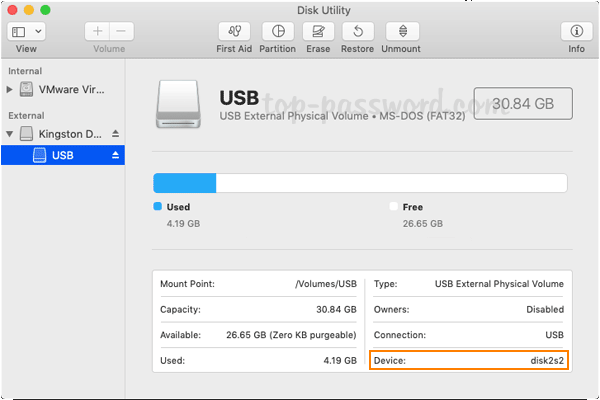
- #CREATE BOOTABLE USB DRIVE ON MAC FOR WINDOWS MAC OS#
- #CREATE BOOTABLE USB DRIVE ON MAC FOR WINDOWS INSTALL#
- #CREATE BOOTABLE USB DRIVE ON MAC FOR WINDOWS WINDOWS 10#
- #CREATE BOOTABLE USB DRIVE ON MAC FOR WINDOWS PC#
- #CREATE BOOTABLE USB DRIVE ON MAC FOR WINDOWS ISO#
#CREATE BOOTABLE USB DRIVE ON MAC FOR WINDOWS WINDOWS 10#
Have you tried creating a Windows 10 installer USB drive from a Mac before? Did you encounter any issues? Let us know your experience in the comments. This is typically a USB drive, although you can also burn it to an optical disc if youre old.
#CREATE BOOTABLE USB DRIVE ON MAC FOR WINDOWS INSTALL#
Create a bootable USB Installer with Install Disk Creator and boot from it.
#CREATE BOOTABLE USB DRIVE ON MAC FOR WINDOWS MAC OS#
You can use it to configure new Windows 10 PCs from scratch. Mac iOS Windows Android Linux Chrome OS Command Line. Since the Windows Boot Camp software can detect bootable Mac OS Extended. That's it! You now have a bootable USB drive with the Windows 10 installer.

Click Quit to close the app and then Eject the USB drive. When Boot Camp Assistant is done, the USB drive will be renamed to WININSTALL. It can take about 20 minutes to format and set up the USB installer on the Mac. Make sure the destination disk is the USB thumb drive you've inserted.Ĭlick Continue.
#CREATE BOOTABLE USB DRIVE ON MAC FOR WINDOWS ISO#
Click the "Choose…" button and locate the ISO file. Create a bootable USB memory stick with the Windows 10 setup: Download and run the Windows. Check the box for "Create a Windows 7 or later version install disk" and deselect "Install Windows 7 or later version."īoot Camp Assistant will automatically locate the ISO file from your downloads folder, but make sure it is the right file. 7 Best iOS Data Recovery Software For Apple iPhone And iPad.The easiest way to launch it is through Spotlight Search, which you can bring up by pressing Command and Spacebar. All the files in the drive will be deleted, so make sure there are no important documents inside. Check if the number next to Capacity is at least 8GB. You can also check by right-clicking the USB drive on your desktop and clicking Get Info. Make sure it's at least 8GB, which is usually marked on the USB stick. If you’d rather use an app to do this instead, try balenaEtcher.Download Windows 10 ISO Create USB installer with Boot Camp AssistantĪfter downloading the ISO file, you'll need to use Boot Camp Assistant to move it to a bootable USB drive. While the Terminal provides a method of doing this that doesn’t rely on additional software, text-based commands aren’t for everyone. If you decide to install Linux, consider a dual-boot arrangement for your Mac. You should see your boot drive, likely labeled “Macintosh HD” and a separate USB drive titled something like “EFI Boot” with a different icon.Ĭlick on your USB drive, then click on the upward-pointing arrow to start Linux. Keep your finger held down on the “Option” button until you see a list of devices appear on-screen. Press and hold the “Option” button then press and release the power button to start your Mac. Power down your Intel Mac, then insert your USB drive if you haven’t already done so. If you see a “The disk you inserted was not readable by this computer” error, click “Ignore” and carry on. This could take a while depending on the size of the DMG and the speed of your Mac or USB drive. Wait for your Mac to write the contents of the DMG to your drive. You may also be asked to grant Terminal permission to access a removable volume, which you should grant. Type it, then hit Enter to begin the copy. You will be prompted for your administrator password. You’ll need to replace /path/to/image.dmg with the path to the DMG file created above, and /dev/diskX with the disk identifier used above (for example, disk3). You can do this with the following command: sudo dd if=/path/to/image.dmg of=/dev/diskX bs=1m diskutil unmountDisk /dev/diskXįinally, it’s time to write your DMG file to your USB drive.

To do this, use the following command replacing diskX with the identifier (for example, disk3 in the screenshot above). Now that you know your identifier, you need to unmount that particular drive so that you can write your DMG file to it. The size of the disk (for example, 8GB) may give it away too. Try your best to get it from reputable website like Apple, CNET, MacUpdate, etc. If you gave it a name like “LINUX” then you should be able to spot it under the “NAME” column. First, make sure the dmg file you downloaded is valid. You’re looking for the identifier for the USB drive you just formatted. Head back to Terminal and type the following to get a list of drives: diskutil list

With your IMG file ready to go, it’s time to write to USB. Following on from the example above, you could type ~/Downloads/ubuntu. For ease, we’d recommend using the same location for both. Similarly, you’ll need to provide a destination in which the DMG will be placed (no need to add the “.dmg” extension).

Use this tool on M55+ Chromebooks, Windows, and Mac devices to create.
#CREATE BOOTABLE USB DRIVE ON MAC FOR WINDOWS PC#
Replace /path/to/downloaded.iso with the location of your downloaded Linux ISO, for example if ubuntu.iso is in your Downloads folder, you can type ~/Downloads/ubuntu.iso. Create a recovery usb flashdrive on another Windows PC and boot to it.


 0 kommentar(er)
0 kommentar(er)
